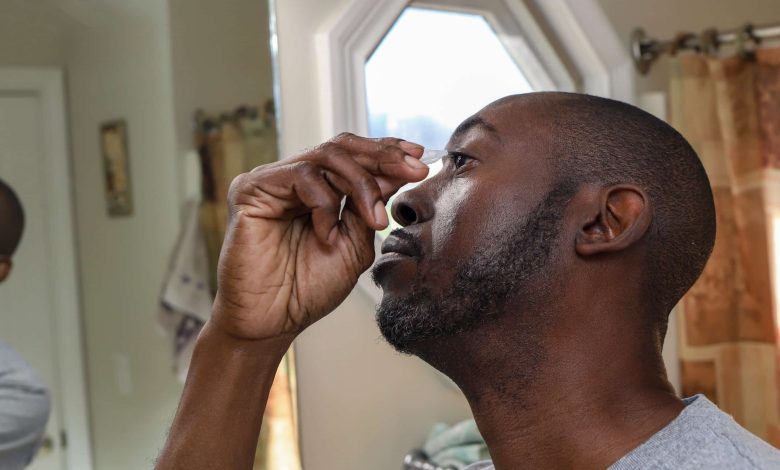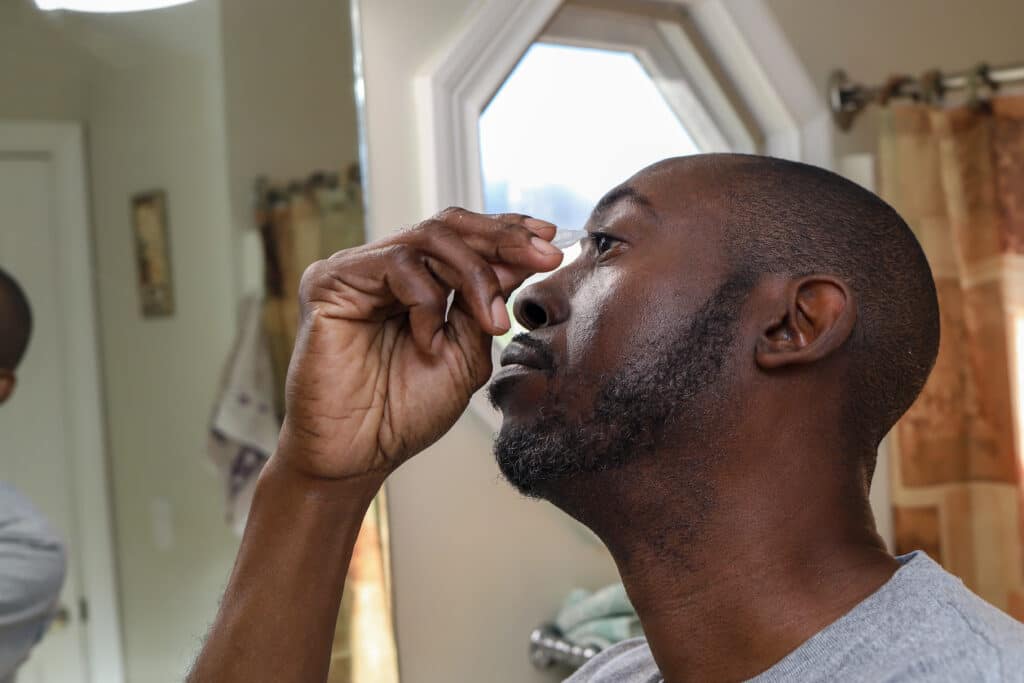This Clinical Trial Tested Eye Drops to Prevent Cataracts – BlackDoctor.org


A revolutionary breakthrough in cataract treatment is on the horizon, with the emergence of C-KAD, a new eye drop therapy. This innovative solution targets the root cause of cataracts, the accumulation of protein buildup on the lens of the eye. By breaking down these protein clusters, C-KAD aims to restore clarity and improve vision.
Phase I and II clinical trials had promising results, with patients experiencing significant improvements in contrast sensitivity, particularly in low-light conditions. This translates to enhanced night vision and a better ability to see objects in dim environments. Additionally, the treatment has been shown to reduce lens opacity, contributing to clearer overall vision.
While the early findings are encouraging, further research is required to establish the long-term effects and safety of C-KAD. Larger-scale clinical trials will be crucial to assess its durability and potential side effects. Moreso, exploring its potential to prevent cataract formation is an exciting avenue for future investigation.
How soon will these eyedrops go to market?
If successful, C-KAD drops could revolutionize cataract treatment by offering a non-invasive alternative to surgery. This could significantly benefit patients, especially those who aren’t great candidates for surgery or prefer to avoid it. However, the accessibility and affordability of the treatment will be crucial factors in determining its widespread prescription and use. As research progresses, we can anticipate a future where C-KAD may play a pivotal role in improving the quality of life for millions of people affected by cataracts.
How do cataracts affect Black Americans?
Cataracts, a clouding of the eye’s lens, are a significant health concern for Black Americans, disproportionately affecting this population. While cataracts are a natural part of aging, certain factors can increase the risk and severity of the condition in Black individuals.
One key factor is the higher prevalence of diabetes among Black Americans. Diabetes can accelerate cataract formation, leading to earlier onset and more severe vision impairment. Additionally, high blood pressure, another common health issue in the Black community, can contribute to the development of cataracts.
Genetic predisposition also plays a role. Research suggests that Black individuals may be more susceptible to certain types of cataracts, particularly cortical cataracts, which affect the outer layer of the lens. This genetic vulnerability, combined with environmental factors and lifestyle choices, can increase the risk of developing cataracts.
Unfortunately, systemic barriers often hinder access to timely and quality eye care for Black Americans. Limited health care access, socioeconomic disparities, and implicit biases can lead to delayed diagnosis and treatment of cataracts. This can result in more severe vision loss and a reduced quality of life.
To address these disparities, it is crucial to increase awareness about the risk factors and symptoms of cataracts within the Black community. Early detection and timely intervention are essential to prevent vision loss and improve outcomes. Regular eye exams, especially for individuals with diabetes or high blood pressure, can help identify cataracts in their early stages.
Furthermore, efforts to improve access to quality eye care are necessary. This includes expanding insurance coverage for eye exams and cataract surgery, increasing the number of eye care providers in underserved communities, and addressing implicit biases that may impact the quality of care received by Black patients.
By addressing these challenges, we can work towards reducing the burden of cataracts on Black Americans and ensuring that everyone has the opportunity to maintain good vision throughout their lives.




